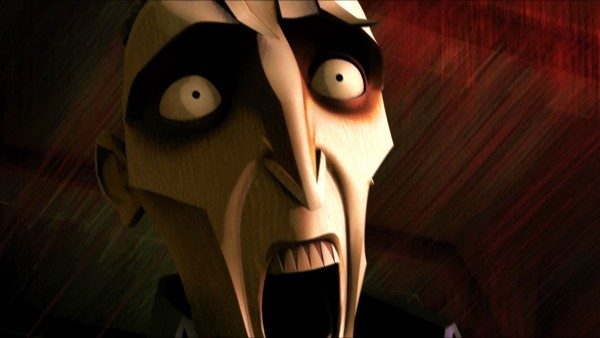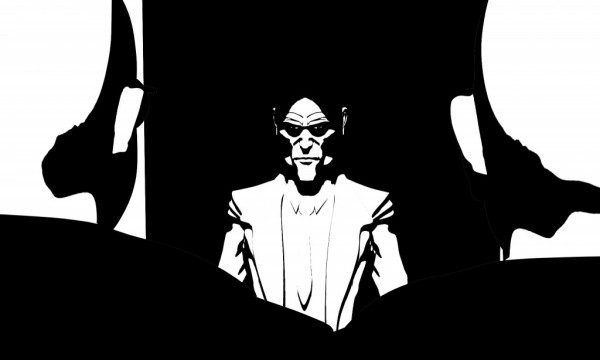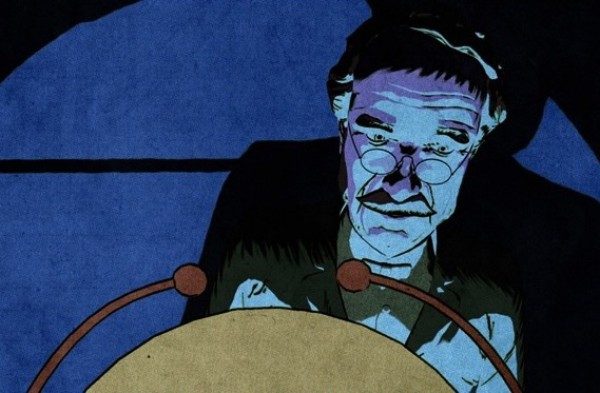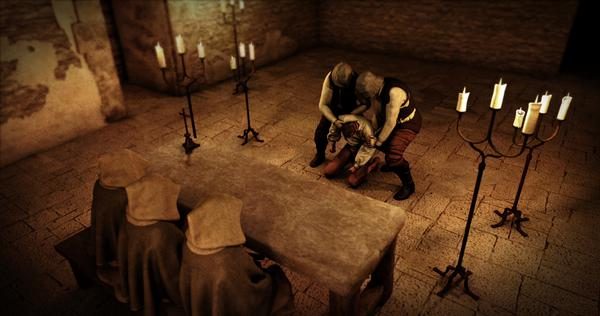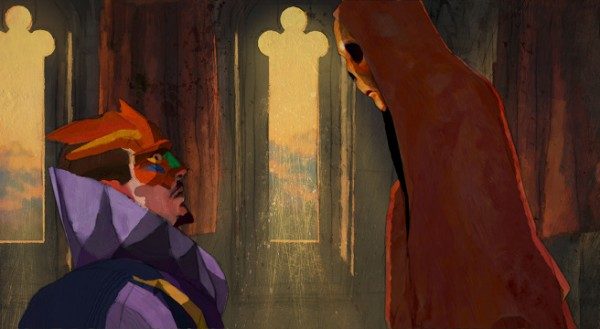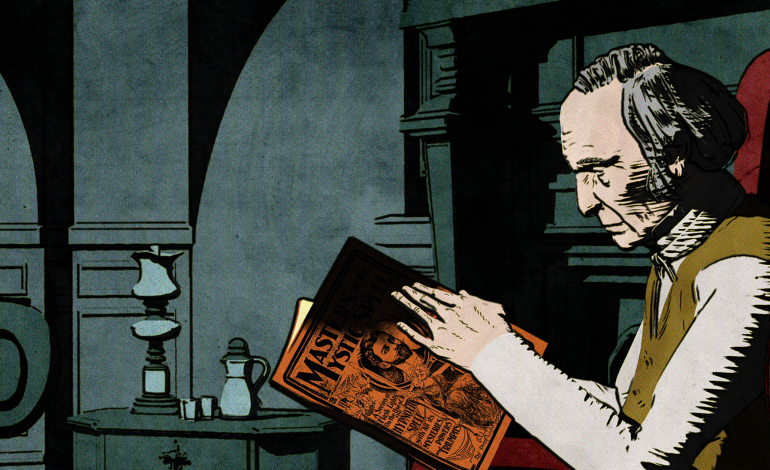

Award-winning Spanish animator Raul Garcia (The Lady and the Reaper) has assembled the diverse talents of various animators, graphic designers and illustrators to bring Edgar Allan Poe’s classic stories of the macabre in the animated feature Extraordinary Tales. Poe was an American 19th century writer whose enduring gothic mystery tales have long been popularized in film.
The 73-minute Luxembourg-Belgium-Spain-US co-production is composed of a quintet of horror stories revolving around the central themes of terrifying fear and death. Each tale is rendered in a different animation and atmospheric style with ominous narration provided by legendary horror-film genre veterans.
The Fall of the House of Usher is narrated by Sir Christopher Lee in one of his last performances. Expertly intoned in a spooky-tales-by-the-campfire tempo, the story follows the narrator’s visit to the house of Roderick Usher. Both house and man are falling apart at the seams as Usher’s haunting sister succumbs to a mysterious disease. The animation style is angular and sharp-lined with vividly colored landscapes.
The Tell-Tale Heart follows, rendered in crisp black and white drawings inspired by the artwork of Latino comic artist Alberto Breccia. Bela Lugosi’s hypnotic Hungarian-accented voice reaches from the past in crackly archival footage from his 1947 radio narration. Here is where parents might be cautious for their younger kiddies, as the tale involves a gruesome dismemberment.
Julian Sands, a veteran actor in horror films, narrates The Facts in the Case of M. Valdemar. In limited colors and evoking 1950s style comic books, a mesmerist experiments with a dying man and traps him in a trance suspended between life and death.
Guillermo Del Toro is up next, narrating The Pit and the Pendulum. In his element behind the scenes as a writer-director of fantasy gothic horror films, Del Toro is less assured as a voice artist here with a lighter reading than called for by the protagonist’s terrifying circumstances. However, the segment is beautifully animated in a detailed realism style. The story follows the imprisonment and hair-raising torture of the narrator during the Spanish inquisition.
The Masque of Red Death is an almost dialogue-free segment (Roger Corman has one line as the Prince) rendered in dreamy watercolor-style, streaked with ominous reds. During a plague which befalls a wide swath of the populous, the Prince and his subjects gather for a lavish masquerade party in a celebration of hedonistic indulgence, under the futile illusion that they can evade the reaches of Death.
There is a steep challenge in truncating Poe’s masterful suspense stories into the 10- to 15-minute length of each short. For the most part, the film as a whole is able to meet the challenge of capturing the essence of each tale, possibly with the exception of The Pit and the Pendulum. While the build up to the narrator’s imprisonment feels smoothly-paced, the series of tortures he undergoes feels too compressed, with major elements of the original omitted to the detriment of the story. Still, as an introduction to the genius of Poe and gothic horror tales, the bite-size tales are inventively presented and should whet the appetite of those new to the genre. Aimed at a young adult audience, the film won the Youth Jury Prize at its Luxembourg City Film Festival premiere in March.
The shorts were completed separately between 2004 and 2014, and bringing together their distinctive styles is like corralling five different films under one umbrella. In an effort to tie the disparate pieces together, the anthology is framed by a graveyard conversation between Death, portrayed by an immobile female statue (voiced in silky tones by Germany’s author of children’s fiction Cornelia Funke), and Poe (a whiny, ill-cast Stephen Hughes), anthropomorphized as a black raven in a tribute to his famous narrative poem. The result is mixed. While providing a reassuring touchstone and anchor before, after, and between the tales, its flat paper-cut-out Corpse Bride-style of animation suffers in comparison to the artistry of the main stories it frames. The un-inspired dialogue between Poe and Death, meant presumably to convey information about the author’s personal life, is simplistic and trite. More successful in unifying the ensemble is Sergio de la Puente’s appropriately creepy music score.
The movie opens in theaters and On Demand October 23…just in time for Halloween.
The Verdict: 4 out of 5
Atmospheric collection of five brief macabre tales based on classic Edgar Allan Poe stories rendered in various styles of animation and narrated by legendary masters of horror. Aimed at a young adult audience, the film is an inventive introduction to Poe, the gothic horror genre, and the diversity of animation.

